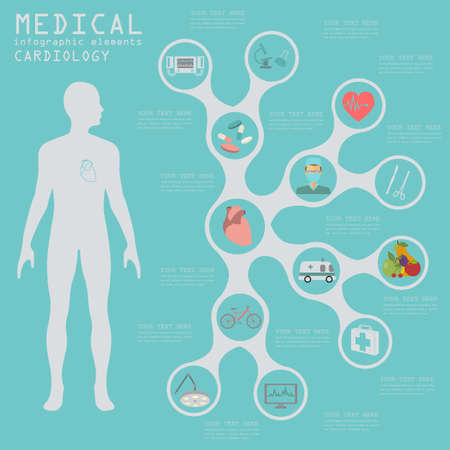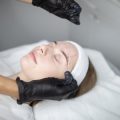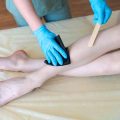Understanding the Diversity of Skin Types in the UK
When considering laser aesthetics for ethnic minorities in Britain, it is crucial to first appreciate the remarkable diversity of skin types and backgrounds that make up the UK’s population. Over the years, Britain has evolved into a vibrant tapestry of cultures, with people from South Asia, Africa, the Caribbean, East Asia, Eastern Europe, and the Middle East calling this country home. This multicultural landscape brings with it a beautiful array of skin tones and textures, each with their own unique characteristics and needs.
The Fitzpatrick skin type scale, which ranges from very fair (Type I) to very dark (Type VI), serves as an essential guide for practitioners when assessing suitability for laser treatments. However, understanding goes beyond just categorising someone by number or appearance. Practitioners must be mindful that individuals with similar skin tones might have vastly different cultural backgrounds and health beliefs, all of which can influence their expectations and concerns regarding aesthetic procedures. In Britain, these differences are often shaped not just by ethnicity but also by generational experiences and regional communities.
For patients with darker skin types—commonly Fitzpatrick IV to VI—the risk profile for certain laser treatments can be distinct from those with lighter skin. Issues such as post-inflammatory hyperpigmentation or hypopigmentation are more prevalent, making it imperative for clinics to tailor their approach carefully. Additionally, historical underrepresentation in clinical trials means there is a need for heightened awareness and education about how different technologies interact with diverse skin types.
Ultimately, recognising and respecting this diversity is not only about achieving safer clinical outcomes; it’s also about fostering trust and making every patient feel seen and understood within a British context. The journey towards truly inclusive care begins with acknowledging that no single approach fits all—especially in such a cosmopolitan society as ours.
2. Cultural Sensitivity and Patient Expectations
When delivering laser aesthetic treatments to ethnic minority patients in the UK, it is essential to recognise how deeply cultural values and beliefs influence attitudes towards cosmetic procedures. These perspectives are often shaped by family traditions, religious practices, community expectations, and historical experiences of discrimination or exclusion from mainstream beauty standards. British society is notably multicultural, with each community bringing its own unique viewpoints on skin health, ageing, and what constitutes beauty.
For some ethnic minorities, seeking aesthetic enhancement may be viewed positively—as a form of self-care or empowerment—while for others, there might be stigma or concern about appearing to reject cultural heritage. Additionally, the significance of certain features (such as skin tone or facial contours) can vary widely between communities. Understanding these nuances enables clinicians to approach consultations with empathy and respect.
Common Attitudes Towards Cosmetic Procedures Among Ethnic Minorities
| Ethnic Group | Common Cultural Values | Potential Concerns |
|---|---|---|
| South Asian | Value natural appearance, emphasis on family approval | Worries about lightening of skin; fear of social judgement |
| Black African/Caribbean | Pride in natural skin tone; importance of heritage | Mistrust due to past medical inequities; concerns about keloid scarring |
| East Asian | Aspiration for even skin tone; subtle enhancements preferred | Anxiety about obvious changes; desire for privacy |
The Role of Open Dialogue
Cultural sensitivity starts with open dialogue. Listening to patients’ stories and understanding their backgrounds helps build trust and encourages honest conversations about expectations and potential risks. Using language that respects personal identity—and being mindful of terminology around race, ethnicity, and appearance—shows respect for individuality and fosters a sense of safety.
Navigating Expectations Together
Ultimately, clinicians must balance professional guidance with patient expectations shaped by culture. By acknowledging and discussing these influences upfront, practitioners can tailor recommendations appropriately, ensuring that treatment aligns not only with aesthetic goals but also with the patient’s values and sense of identity.

3. Effective and Respectful Communication Strategies
When working with ethnic minority patients in laser aesthetics, the way we communicate is as crucial as the treatment itself. Employing inclusive language is not just about political correctness—it’s about ensuring every patient feels genuinely seen and valued. In the UK’s multicultural landscape, it is essential to avoid assumptions regarding a person’s background, beliefs, or skin concerns. Instead, use open-ended questions and terminology that invites patients to share their stories and expectations. This approach builds trust and empowers individuals from diverse backgrounds to express themselves without fear of misunderstanding or judgement.
Respect for privacy forms another cornerstone of effective communication in this setting. Many patients may feel apprehensive discussing their appearance or cultural sensitivities; some might also be concerned about confidentiality due to close-knit community ties. Practitioners should always provide private consultation spaces and reassure patients that their information will be handled with discretion, in line with UK data protection standards. Addressing these concerns upfront creates a safe environment where patients can fully engage in the decision-making process.
Active listening goes hand-in-hand with respect and inclusion. Taking the time to listen—without interruption—to your patient’s needs and concerns demonstrates genuine care. Reflect back what you’ve heard using phrases like “If I understand correctly…” or “It sounds as though…” to confirm understanding and clarify any ambiguities. This technique ensures that all voices are heard, especially those who may have felt overlooked in previous healthcare experiences. By prioritising these respectful communication strategies, practitioners can foster meaningful relationships and deliver tailored laser aesthetic care that truly honours each individual’s unique heritage and aspirations.
4. Addressing Myths and Misconceptions
When working with ethnic minority patients in the UK, one of the key aspects of patient communication is actively addressing the myths and misconceptions that surround laser aesthetics. Many individuals from diverse backgrounds may have grown up hearing conflicting or alarming stories about how laser treatments interact with darker skin tones, or may believe that these technologies are simply not safe for them. As practitioners, it is our responsibility to foster an environment where questions are welcomed and knowledge is shared openly.
Common Myths and Facts About Laser Aesthetics
| Myth | Fact |
|---|---|
| Laser treatments are unsafe for dark skin | Modern lasers (such as Nd:YAG) are designed for safety across all skin types when operated by trained professionals |
| Laser can permanently damage melanin-rich skin | With correct settings and protocols, risks such as hyperpigmentation can be minimised |
| Treatments are equally effective on all hair colours | Darker hair responds best; lighter hair may require alternative methods |
Encouraging Open Conversation
I’ve personally found that starting each consultation with open-ended questions—“What have you heard about laser treatments?”—invites patients to share their concerns without embarrassment. This gentle approach helps me gauge their current understanding and address any culturally rooted fears or misinformation directly. In my experience, discussing real-life case studies from within their own communities also helps build credibility and trust.
Educational Materials Tailored to Cultural Contexts
Providing clear, culturally relevant educational resources can significantly reduce anxiety. For example, I offer leaflets and digital content featuring testimonials from British ethnic minority clients who have undergone successful treatments. These materials often resonate more than generic information, helping patients feel seen and understood.
The Importance of Reassurance Through Science and Empathy
Ultimately, dispelling myths requires a blend of scientific explanation and empathetic listening. By acknowledging historical mistrust in medical aesthetics within some communities—and countering this with evidence-based reassurance—we empower our patients to make informed decisions about their care.
5. Tailoring Consultation and Aftercare for Diverse Patients
Adapting the consultation and aftercare process is crucial when supporting patients from ethnic minority backgrounds seeking laser aesthetics in the UK. Recognising that each individual brings unique skin characteristics and cultural values to their treatment journey, practitioners must offer truly personalised guidance at every stage. During consultations, it is essential to discuss not only medical histories but also lifestyle factors, religious practices, and traditional skincare routines. For example, some patients may observe fasting during certain periods or have specific requirements for modesty during treatments, which should be addressed respectfully. Moreover, many people of colour may use natural oils or herbal remedies as part of their daily regime—these products can influence skin sensitivity and should be factored into pre- and post-laser care advice.
In terms of aftercare, clear communication is key. Providing written instructions that consider language preferences or offering follow-up calls in a patient’s preferred language can make a world of difference. Recommending appropriate sunscreens and gentle moisturisers tailored for darker skin tones demonstrates attentiveness to both medical needs and cultural expectations of beauty. Additionally, being mindful of cultural taboos around visible downtime or marks—such as hyperpigmentation—can help practitioners suggest practical solutions like makeup tips or timing treatments around important social events. Ultimately, fostering an environment where patients feel seen and heard creates trust, empowering them to achieve their aesthetic goals confidently and safely.
6. Building Trust and Long-term Relationships
Establishing trust is the cornerstone of delivering effective laser aesthetic treatments to patients from ethnic minority backgrounds in the UK. The journey begins by creating a truly safe space—one where each patient feels not only heard but also understood in the context of their unique cultural identity. This means moving beyond surface-level politeness to demonstrate genuine cultural awareness in every interaction, from the first consultation to follow-up care.
Practitioners can foster trust by actively listening to concerns that may be shaped by cultural beliefs, previous experiences within the healthcare system, or anxieties about skin-specific risks related to laser procedures. Sensitivity to language barriers, religious considerations, or modesty preferences (such as offering chaperones or gender-congruent practitioners) can go a long way in making patients feel respected and safe.
Consistency is key: maintaining transparency about treatment plans, expected outcomes, and potential risks not only empowers patients but also signals integrity and respect. It’s equally important to acknowledge any limitations in knowledge with humility and a willingness to learn—from both professional development opportunities and directly from patients themselves.
Over time, these efforts build the foundations for long-term relationships rooted in mutual respect. Patients who feel valued for their individuality are more likely to engage openly, adhere to aftercare instructions, and return for future treatments. Word-of-mouth recommendations from satisfied patients within tight-knit communities further reinforce your reputation as a culturally sensitive practitioner.
Ultimately, embracing cultural considerations isn’t just best practice—it’s an invitation to deepen human connection and deliver truly personalised care. In the ever-evolving world of laser aesthetics, this commitment transforms routine appointments into lasting partnerships that benefit both practitioner and patient alike.

